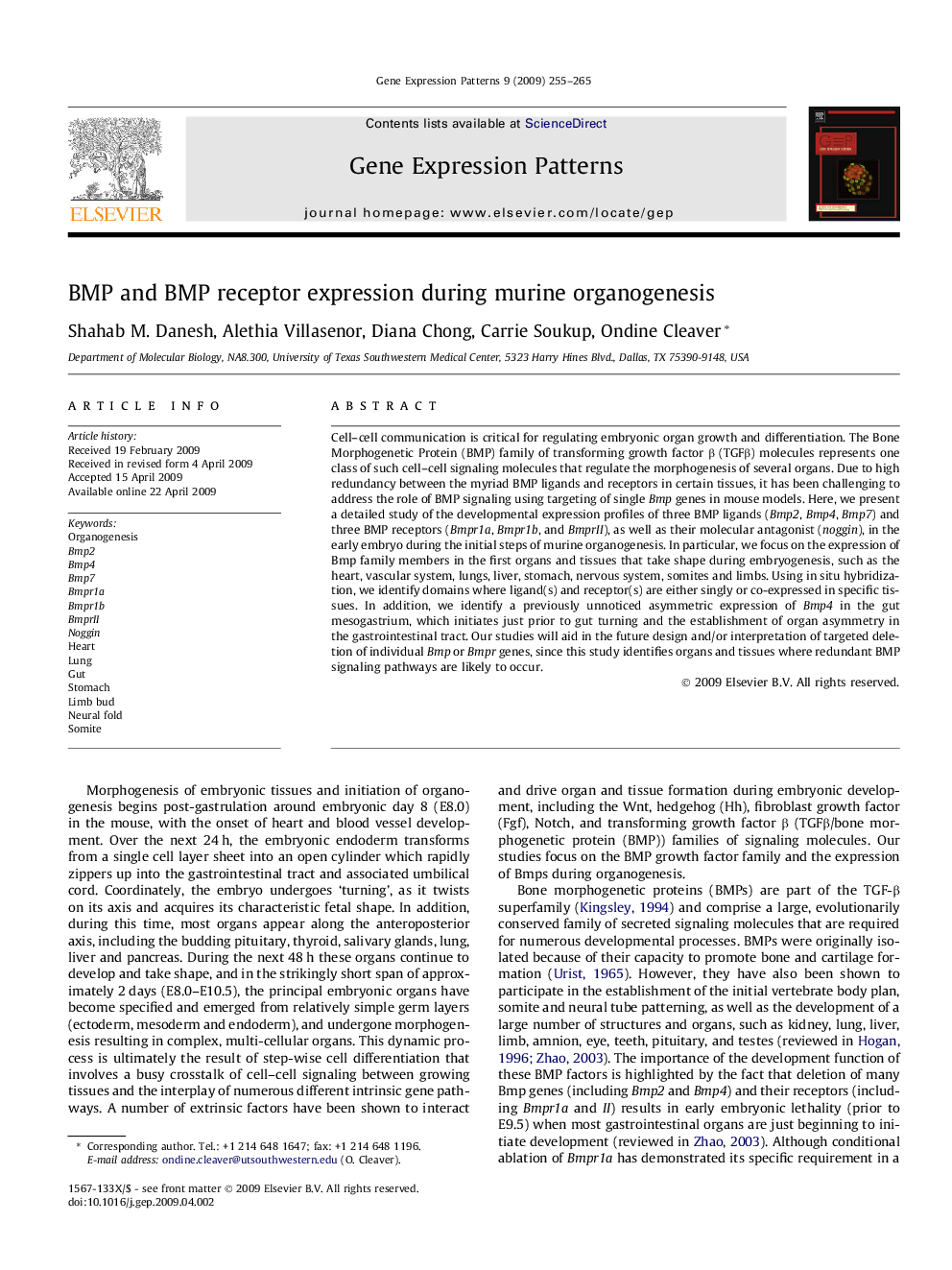| Article ID | Journal | Published Year | Pages | File Type |
|---|---|---|---|---|
| 2182357 | Gene Expression Patterns | 2009 | 11 Pages |
Cell–cell communication is critical for regulating embryonic organ growth and differentiation. The Bone Morphogenetic Protein (BMP) family of transforming growth factor β (TGFβ) molecules represents one class of such cell–cell signaling molecules that regulate the morphogenesis of several organs. Due to high redundancy between the myriad BMP ligands and receptors in certain tissues, it has been challenging to address the role of BMP signaling using targeting of single Bmp genes in mouse models. Here, we present a detailed study of the developmental expression profiles of three BMP ligands (Bmp2, Bmp4, Bmp7) and three BMP receptors (Bmpr1a, Bmpr1b, and BmprII), as well as their molecular antagonist (noggin), in the early embryo during the initial steps of murine organogenesis. In particular, we focus on the expression of Bmp family members in the first organs and tissues that take shape during embryogenesis, such as the heart, vascular system, lungs, liver, stomach, nervous system, somites and limbs. Using in situ hybridization, we identify domains where ligand(s) and receptor(s) are either singly or co-expressed in specific tissues. In addition, we identify a previously unnoticed asymmetric expression of Bmp4 in the gut mesogastrium, which initiates just prior to gut turning and the establishment of organ asymmetry in the gastrointestinal tract. Our studies will aid in the future design and/or interpretation of targeted deletion of individual Bmp or Bmpr genes, since this study identifies organs and tissues where redundant BMP signaling pathways are likely to occur.
